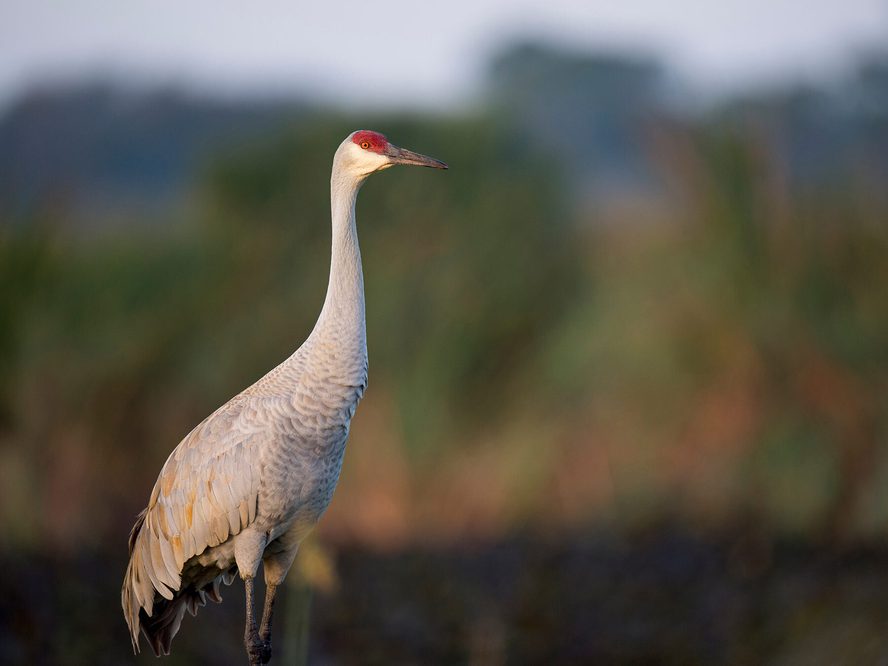Jump to Section
Female Sandhill Cranes (Male vs Female Identification)
Last updated: 20 February 2023
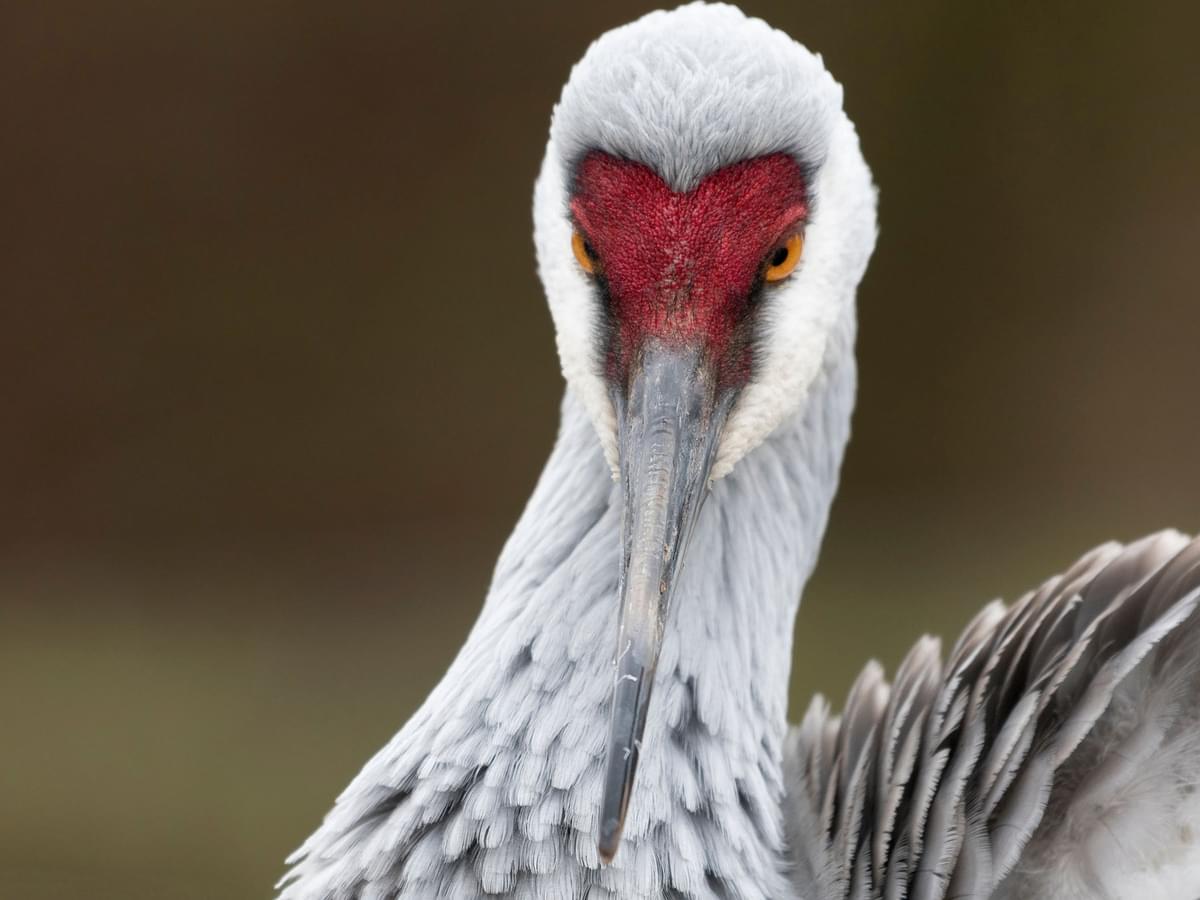
Cranes hold mythical status in culture and folklore all around the world - and the North America Sandhill Crane is no different.
This graceful crane appears in American art, and gatherings like the Monte Vista Crane Festival show that these elegant birds still capture our imagination today. This is a guide to female Sandhill cranes, including what they look like and how to identify them from males.
Sandhill cranes are strongly monomorphic, meaning there are practically zero immediately obvious differences between males and females. However, males are slightly larger and heavier, which aids identification when a paired couple is side by side.
These gracious birds form strong pair bonds and cooperate to raise chicks, and most bonds remain intact from one breeding season to another for the entirety of their 25 to 35-year lifespan.
So besides size and weight, you have to delve into these intelligent birds’ behaviors to tell apart males and females reliably.
There is much more to learn about female Sandhill cranes - read to find out!
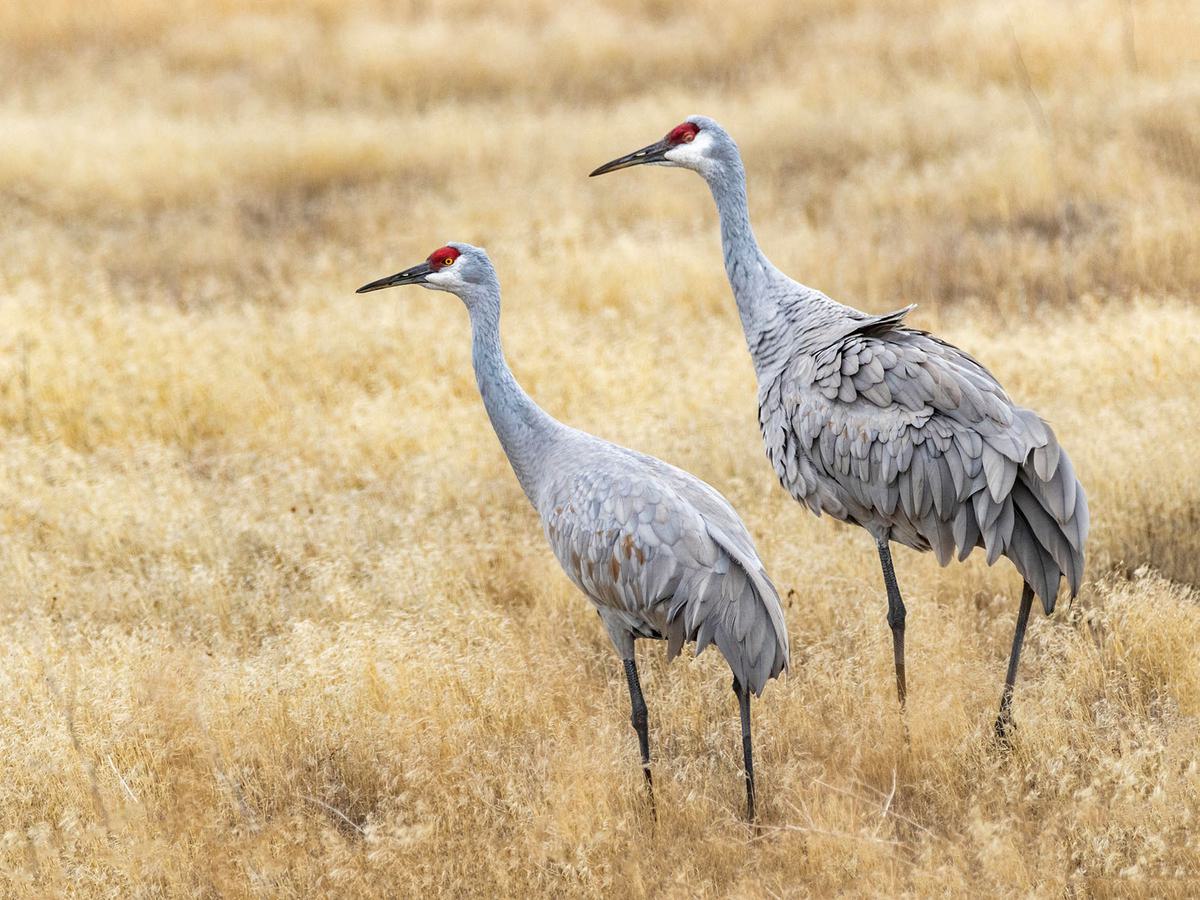
Female (left) and male (right) Sandhill Cranes - note the size difference
How can you tell if a Sandhill Crane is male or female?
Male and female Sandhill cranes are identical in plumage. Not a single study reliably identifies males and females on the basis of plumage coloration and patterns alone.
However, males are consistently larger than females, weighing an average of 4.57 kg (10.1lb), while females weigh around 4.02 kg (8.9 lb). In addition, height and wingspan vary, which makes it tough to identify males from females from visual size differences alone.
One reliable method for identifying the female is during the union or pairing dance, which paired birds repeat throughout the year to maintain their pair bonds.
When calling in the union dance, the male will point his neck and bill toward the sky and produce one singular call while the female responds with two notes. The female also points her bill more horizontally and has a less upright posture.
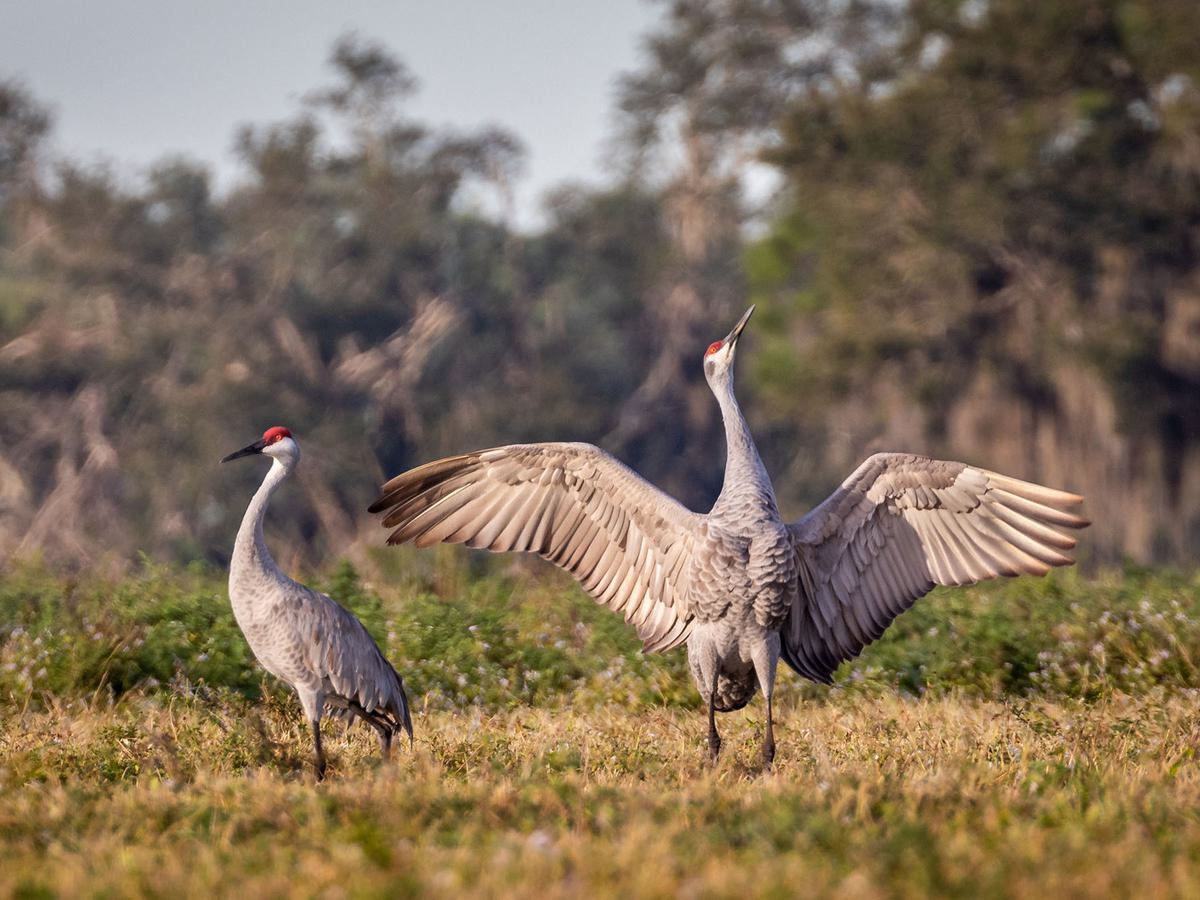
Male Sandhill Crane (right) displaying to a female
Behavior differences
Researchers have gone to great lengths to study the behavioral differences between male and female Sandhill cranes.
For example, one study found that males are more mobile than females, moving about 50% more than females. Females spend marginally more time foraging for food, whereas males spend 50% more time ‘loafing about’ than females!
Another key finding is that males are distinctly more alert than females and are often spotted with upright postures. Again, this helps identify males from females in large flocks.
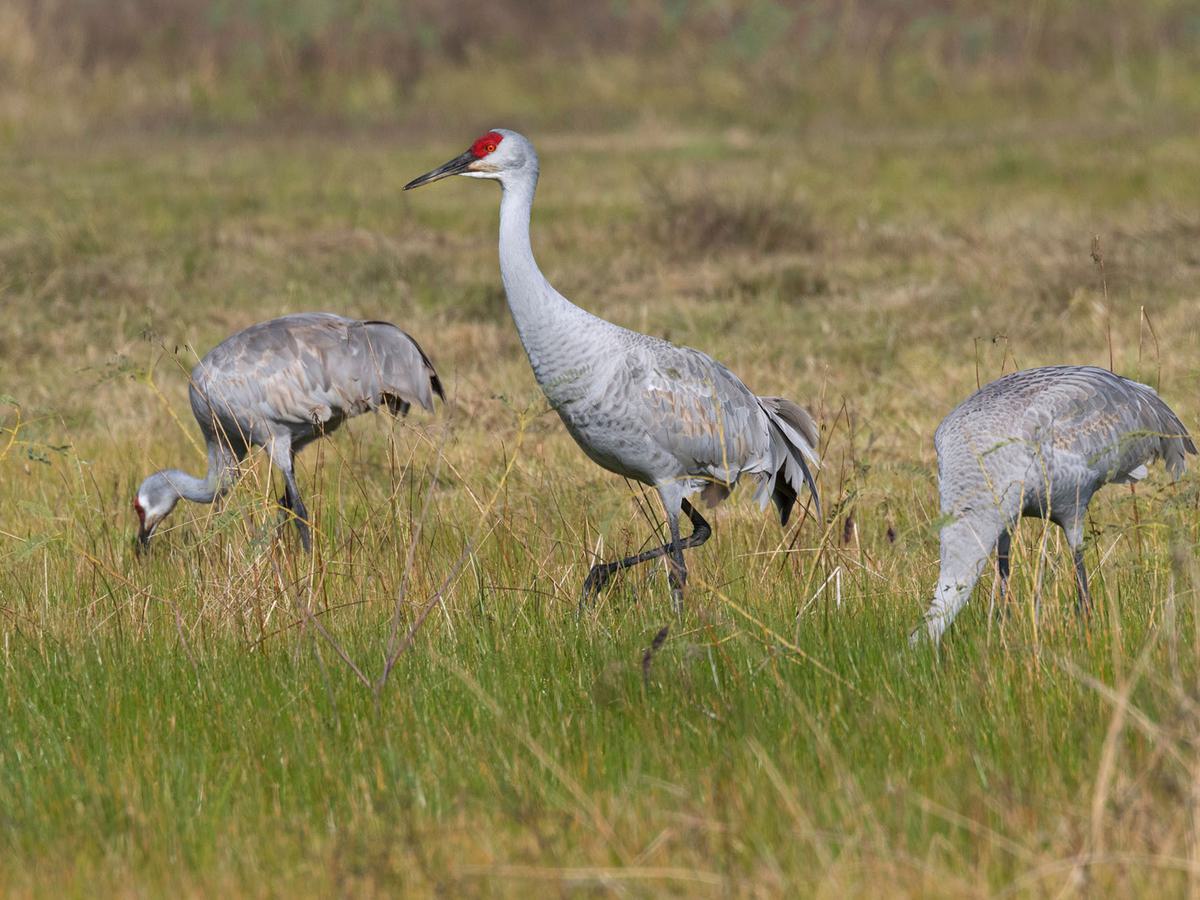
One study found that female Sandhill Cranes generally spend more time foraging than males
Breeding
Sandhill crane courtship and breeding behaviors are complex and vary between subspecies.
A total of eight courtship dances are recognized, and males and females take on slightly different roles in each. In most dances, males take on a distinctively upright posture to advertise themselves to females. They also grasp pieces of vegetation or dirt and toss them up in the air known as the “head toss”. In some dances, males leap up vertically towards the sky.
The most common and famous dance is called the “unison dance” or “unison call.” It involves the male dancing with stretched wings and both the male and female pumping their heads forward and up. The male might perform one or more vegetation tosses too. Then, the male throws his head back and emits a fairly deep unison call.
The female responds by moving her head back at a different angle and emitting a higher-pitched call. It’s often said that the female responds with two notes, but this does vary. The pair then leap up together, run, and flap their wings in excitement.
The unison call is repeated throughout the entire year - it’s not confined to courtship and breeding alone. This elegant dance helps Sandhill cranes renew their pair bonds from season to season.

Sandhill Cranes perform a unison dance, which helps them maintain their bonds
Nesting and parental duties
The male usually initiates nest construction, but the female usually has the final say on what site is used. Nest construction is largely a joint effort until the female lays the eggs and begins incubating.
Both males and females incubate, but the male seems to add more material to the nest throughout the incubation period. Moreover, females incubate at night, whereas males take over during the day.
The female chiefly broods the chicks, of which there are usually two. But, then, it seems that males and females each take primary care of one chick each. Both parents raise chicks until they can feed and fly independently.

Two-day old Sandhill Crane chicks on the nest
Calls
Sandhill cranes have a wide range of calls, and some exhibit differences between males and females. For example, the loud rattle call is slower for males than for females. Male rattle calls are extremely loud and can be heard over 2 miles away.
Unison calls are lower pitched for males, whereas female calls are more staccato. Most other calls are variable and hard to tell apart, but for the most part, males have deeper, more drawn-out calls than the higher-pitched staccato females.
What does a female Sandhill Crane look like?
Female Sandhill Cranes are tall birds with long necks, legs, and broad wings. They’re bulky and strong but have slender necks. Plumage is mainly slate gray with a brown-rusty wash.
Adult birds have pale cheeks and red skin on their face and crown, which juveniles lack. Females are near-identical to males with the exception of weight, as males weigh slightly more.
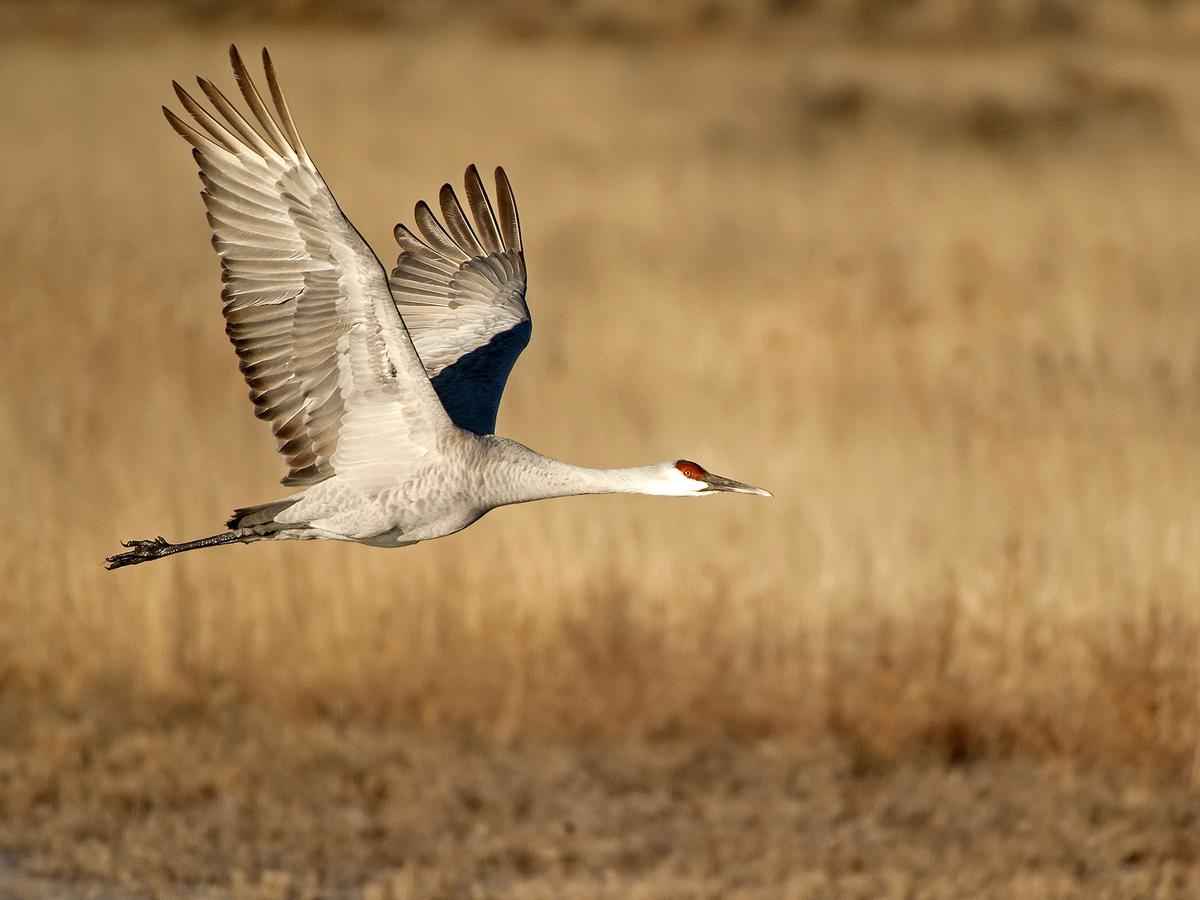
Close up of a Sandhill Crane in flight
Are female Sandhill Cranes bigger than males?
Female Sandhill cranes are slightly smaller than males, weighing an average of 4.02 kg (8.9 lb) compared to the male’s average of 4.57 kg (10.1lb).
Differences in body length, wingspan, etc., are negligible. You’re only likely to tell males and females apart by size alone when a couple is standing next to each other. Also, the male tends to have a more alert and upright posture, which further accentuates his size difference.
Can female Sandhill Cranes raise young alone?
Sandhill cranes are known for their strong, typically lifelong pair bonds that they maintain with their ornate and rather beautiful unison dance. Dancing seems particularly important to cranes, as they perform these dances throughout the year.
Even young birds and juveniles seem to dance outside of the breeding season, suggesting that dances involve some sort of importance beyond sexual behavior.
Males and females are highly cooperative, working together to construct nests, incubate eggs and raise young.
It’s highly unlikely that a female Sandhill crane would be able to successfully raise young alone without a male. However, if the male died after chicks were flying and feeding independently, then it’s possible the female could raise them alone.
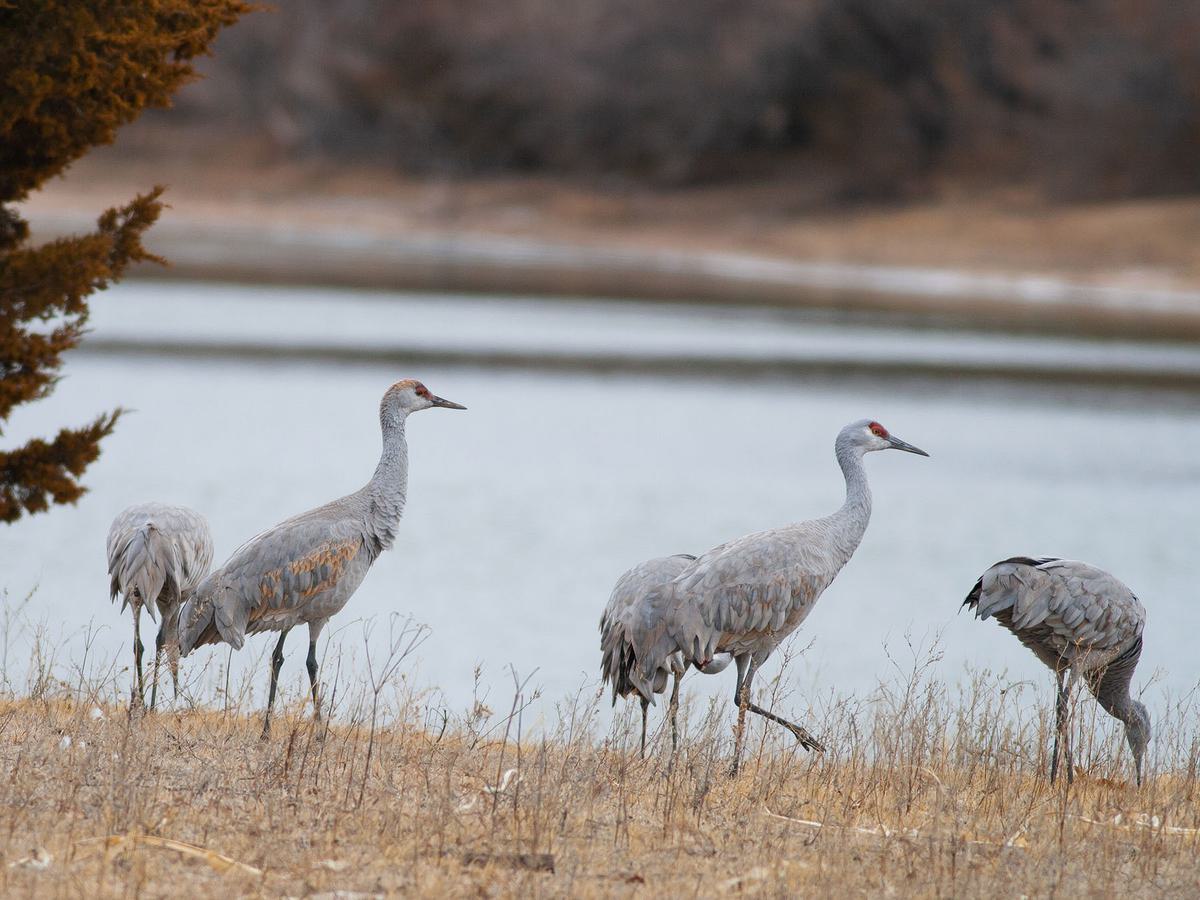
Sandhill Cranes gathering near the Platte River in central Nebraska during spring migration
FAQs
Do female Sandhill Cranes have red heads?
Female Sandhill cranes have red heads the same as males. Moreover, there are no consistent differences between the red crows of male and female Sandhill cranes - they are virtually identical.
What color are female Sandhill Cranes?
Female Sandhill cranes are primarily gray with a brown wash. They’re the same color as males, with no discernible differences in coloration.
Do female Sandhill Cranes call?
Female Sandhill cranes produce most of the same calls as males, but their voices are generally higher-pitched and more staccato.
In the famous unison dance, females tend to emit shorter, higher-pitched notes. It’s often said that while the male produces just one deeper call, the female produces two higher-pitched calls in reply.
Do female Sandhill Cranes sing?
Sandhill cranes don’t sing - they call. Males and females have broadly similar calls, though the male is deeper and less staccato.
